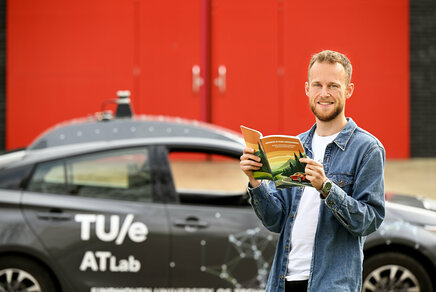Medical sensors are 'the canary in the mine'
PhD candidates Eveline Mestrom and Jonna van der Stam receive their doctorate for their research on a smart patch that warns of unexpected complications
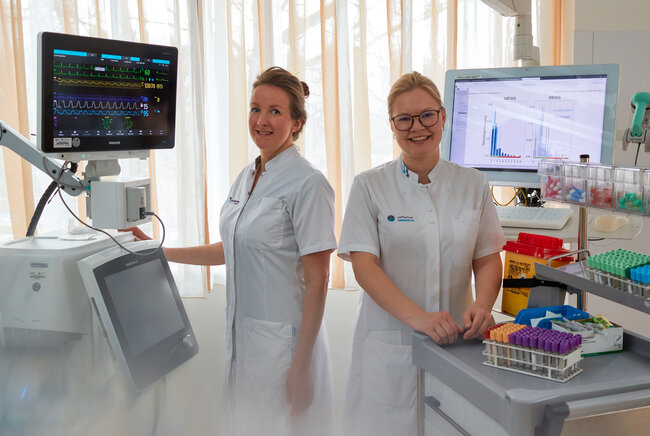
Although we are using more and more smartwatches and activity trackers in our daily lives, the use of wearable technology is not yet commonplace on the hospital work floor. Intensivist-in-training Eveline Mestrom and data analyst Jonna van der Stam met through one of the first studies worldwide to investigate the effectiveness of wearable sensors in patient care. In this successful collaboration, they examined how a smart patch and a wrist-worn sensor can reduce complications and shorten hospital stays.
When you put the dissertations of TU/e PhD candidates Eveline Mestrom and Jonna van der Stam side by side, it becomes clear how closely their lines of research are intertwined. And it is not just the cover design and research that are closely linked; on Tuesday, April 18, they will defend their 'teamwork' at the Department of Electrical Engineering and the Department of Biomedical Engineering, respectively, on the same day and shortly after one another.
Doctor and engineer
The fact that Eveline’s and Jonna’s research projects would somehow be linked was not something they had predicted beforehand, the ladies explain in the staff restaurant of the Catharina Hospital. Let’s rewind for a moment. Eveline had been collecting patient data at the Intensive Care Unit for a year when Jonna started her PhD track at the General Clinical Laboratory. There, she worked on the predictive value of new markers in blood samples. This is when the data stream from the new TRICA - 'Transitional Care' study - came into play. This study is carried out within the Eindhoven MedTech Innovation Center (e/MTIC), an innovative partnership between TU/e, Catharina Hospital, Máxima Medical Center, Kempenhaeghe Epilepsy and Sleep Center and Philips.
And before long, Eveline and Jonna were packing boxes of medical sensors together. Now, nearly five years later, the seasoned PhD candidates on the TRICA team have nothing but praise for the collaboration between doctor and engineer. But above all, they are proud of the fact that the booklet has turned into more than just a booklet: the certification procedure for the smart patch Healthdot has now been completed and the medical sensors can be found in more and more hospitals throughout the Netherlands. It is a first step in improving and automating the monitoring of patients who have undergone (major) surgery.
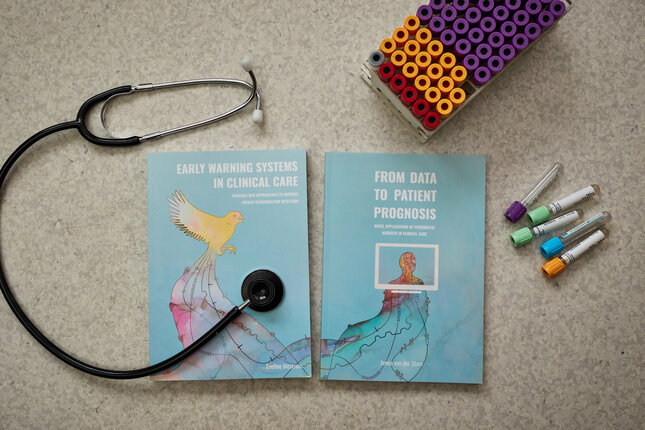
Predictive data
The slow roll-out of technology in hospitals is something Eveline - who is in the final stages of her intensive care physician specialization - can explain. “Monitoring the heart rate of a healthy jogger is not the same as monitoring a sick patient. There’s a lot more work involved in that. Besides, you also have to learn to rely on a device, whereas as a doctor, you’re trained to use your clinical eye. In acute situations, you tend to rely more on what you already know and quickly fall back into old patterns. But just like miners who used to take a canary down with them to alert them of high carbon monoxide levels, we now see that wearable sensors can in fact contribute to improved patient monitoring and early detection of patient deterioration.”
Eveline and Jonna monitored 200 patients who underwent gastric bypass surgery and 150 patients admitted for oncology-related abdominal surgery. All of these patients were given a sensor to register their heart rate and respiratory rate shortly after surgery, Jonna explains. “We wanted to gain experience with the Healthdot, a smart patch developed by Philips, and the sensor watch ELAN, which had already been tested at the hospital. Is the registration of these sensors in line with detailed ICU monitoring, and can we use the data to improve the so-called early warning system? And exactly what data would we need for this? There’s a ton of data available and can measure all kinds of things, but more isn’t always better."
Earlier discharge
The questions were slightly different for the two patient groups, but the overarching goal was to find out how technology can improve the recovery of a patient who has just had surgery by detecting signs of deterioration at an earlier stage.
Eveline: “Patients who undergo oncological abdominal surgery spend only a short time in the ICU. This is often followed by a longer ward stay because the risk of complications is higher. In the ICU, they’re under continuous monitoring, but on the ward, they’re only monitored a few times a day. By monitoring the patients with a wearable sensor, we can find out more quickly who might develop complications.
And this works both ways: based on the sensor data, we might be able to discharge patients from the hospital sooner if we see that certain patterns are returning to normal. This is more beneficial for recovery, because in your own environment, your rhythm is more regular, you sleep better and you’re more active.
Patients undergoing gastric bypass surgery can also be released earlier thanks to the medical sensor. The standard procedure for this treatment is for a patient to stay at the hospital overnight, but in more and more places, a day admission is sufficient. We’re able to demonstrate that the tested sensors enable us to monitor patients in a home setting just as well. I expect that remote monitoring will become increasingly important in the healthcare industry. These innovations help to reduce the workload, freeing up more time for healthcare staff to perform other tasks.”
Surprising result
The continuous long-term monitoring of the 350 postoperative patients also led to a somewhat surprising result, Eveline and Jonna explain excitedly. Because the data show that the patients’ day-night rhythm is very clearly discernible. A possible early warning indicator, according to Eveline.
“Operations temporarily disrupt the day-night rhythm. But in the period that follows, we see how that rhythm restores itself, which definitely tells us something about the patient’s status. For example, the chances of developing complications seem much lower. In the future, we will feel more comfortable sending someone with a restored day-night rhythm home.”
But, Jonna stresses, in order to factor this into the risk scores, follow-up studies are needed. “It’s a super interesting phenomenon that hasn’t been thoroughly researched yet.”
Patient bedside
For Jonna, the TRICA study meant that as a newly graduated medical engineer, she could suddenly be found at the patient’s bedside. “A true hands-on project, but it also took some getting used to in terms of environment. What’s valuable about an ecosystem like e/MTIC is that it brings together people from different backgrounds so we can learn from each other. I knew that I needed to collect good quality data in order to perform the data analysis. But I’m now also much more aware of the patient behind the data, the person in the hospital bed, who’s full of questions.
For Eveline, it’s the other way around. Doctors and nurses are constantly registering everything, but much of this data later turns out to be useless for statistical research. Through more data insight, you realize how important it is to think in advance about how and when to register things. Collaboration is helpful in setting up these kinds of studies, and hopefully our dissertations will serve as a sort of initial guide in that respect.”
Celebrating successes
The first follow-up studies have now also been completed and the smart patch is currently being used in more and more hospitals to monitor patients. According to Eveline, this is further proof of how collaborations like those within the e/MTIC can accelerate healthcare innovations. The collaboration between Eveline and Jonna itself has several facets, they agree with a laugh, such as their shared love for cake. Small successes on the work floor were always celebrated with cake, including that time when they had to bake as many as thirty cakes to be able to serve something tasty to all the colleagues involved.
And while Eveline is adventurous and slightly over-enthusiastic at heart - she once obtained her flying license in seven weeks, now she flies around trying to combine chaotic night shifts, two small children and a dissertation that needed to be finished - Jonna thinks everything through in advance, down to the smallest details, and has great perseverance: she hopes to complete the Pieterpad walking trail this year. Soon they will go their separate ways. Eveline will be working at Radboud UMC as an intensivist-in-training, and Jonna will continue working with data in a new position at the Catharina Hospital. But not before celebrating the completion of their PhDs with a joint dinner of course.
Media contact
More on Health


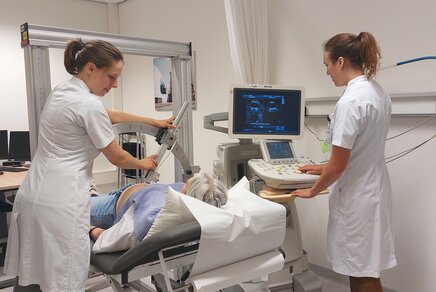
Latest news
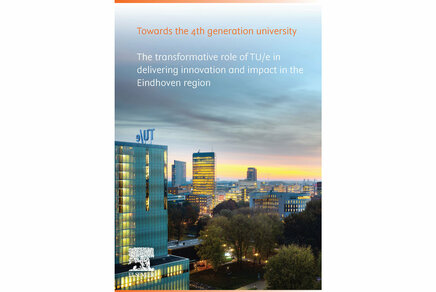
![[Translate to English:] [Translate to English:]](https://assets.w3.tue.nl/w/fileadmin/_processed_/e/6/csm_Hendriks%20Banner%20image%20Photonic%20crystal%20fiber-tip%20sensor%20BvOF_9b4093b84b.jpg)
